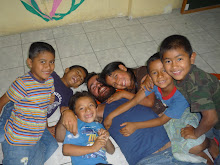Google map: http://maps.google.co.uk/maps?f=q&source=s_q&hl=pt-PT&geocode=&q=trujillo+peru&sll=53.800651,-4.064941&sspn=12.739664,28.168945&ie=UTF8&ll=-5.922045,-79.233398&spn=5.352645,11.206055&z=7
Interesting to know what the Inca managed to do in not much more than a century…
First, it was news to me how short-lived their conquer of the Andes, in Peru and beyond, was – not much longer than 100 years since the beginning of their expansionism to their defeat at the hands of the Spanish. Second, it was also news to me how similar their attitude towards the civilisations their conquered was to the one the Roman Empire had in its time: crush the opponents militarily, then crush them again with a heavy tax burden, but at the same time let them continue with their local government, traditions and culture. To minimise the risk of revolts, I guess… Third, it was again news to me (but also a bit inconsistent with the previous point?) how condescending they were towards those same civilisations when time came to narrate to the Spanish what other cultures had predeceased them – “no-one, just savages who did nothing but wonder around naked”.
Not quite... I guess the winners take the spoils and are entitled to write history as they wish to. And it's even easier to "write" it in the way you want when none of the civilisations before you (not even yours as matter of fact!) had a written language. You just need to open your mouth and say whatever comes to mind - what historical papers will be found to prove you wrong?
It’s actually incredible the variety and richness of pre-Inca cultures that lived in Peru. I've just been having a taste of it in the northern coast. I visited Chan-Chan, the mega capital of the Chimú (who ruled between 850-1470 d.C.) and apparently the biggest adobe city in the world, and the Huacas del Sol y de la Luna, the big temples of the Moche, who predeceased the Chimú in more or less the same region, around 200 a.C.-850d.C.
These are very deteriorated sites, because of the materials used for their construction, their old age, and the harshness of the conditions that the El Niño imposes every once in a while on this coast. But they are still very impressive. Imagining these cultures built all this without even the advent of the wheel... How on earth did they manage that?
By the way, I can recommend Trujillo, the big city just by the ruins. It has very nice colonial architecture, even if only strictly limited to the city centre – the old quarter. Everything else about the city is just vast (very vast, actually) and uncharacteristic construction surrounded by the rocky desert. Not much to write home about there, with the exception of a couple of interesting bars and restaurants, and a very trendy sushi lounge. Not that I tried the sushi…
.










 Chan-Chan: a mega adobe city, of which only a very small portion is visible today. By the way, they have taken "reconstruction" a bit too literally here...
Chan-Chan: a mega adobe city, of which only a very small portion is visible today. By the way, they have taken "reconstruction" a bit too literally here... The Huaca del Sol y de la Luna is perfectly located vis-à-vis its natural surroundings. The temples, which were constructed one on top of the other, generation after generation, until they reached a pyramid-like shape, resemble closely this majestic mountain. Perfectly shaped, surrounded by the lowlands of the desert. Just perfect, just beautiful
The Huaca del Sol y de la Luna is perfectly located vis-à-vis its natural surroundings. The temples, which were constructed one on top of the other, generation after generation, until they reached a pyramid-like shape, resemble closely this majestic mountain. Perfectly shaped, surrounded by the lowlands of the desert. Just perfect, just beautiful

Rich carvings and the surrounding ruins of the old urban area seen from Huaca de la Luna. Huaca del Sol is seen at far - it's not being visited currently as it's pretty much all covered in desert sand; the archaeologists are waiting for funding to continue with the research. Why is there never money for this kind of stuff?!


No comments:
Post a Comment